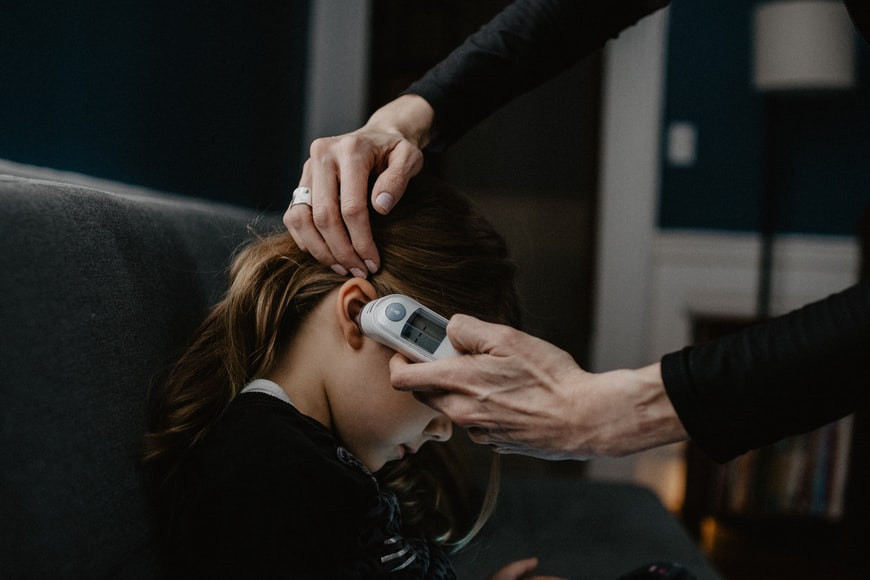Most fevers in children are harmless and are the body's natural response to infection or illness. Fever is characterized by an increase in body temperature, which is the body's defense mechanism against germs or viruses entering the child's body.
Although considered harmless, fever can make children uncomfortable. Parents can give medication to reduce fever, such as paracetamol or ibuprofen. It should be noted that the two fever-reducing drugs are two different drugs. You should know when to give paracetamol or ibuprofen to your child.
Differences between Paracetamol and Ibuprofen
Paracetamol and ibuprofen are commonly used medications for pain relief and fever reduction in both children and adults. They are active ingredients found in various brands of drugs available in the market. The two medications are not the same, despite the fact that both reduce fever and pain. Here are some of the differences:
Mechanism of Action
Paracetamol is a fever-reducing drug (antipyretic) and pain reliever (analgesic) which works by reducing the production of prostaglandins in the brain, which are chemicals that trigger the body's response to heat pain. Usually, paracetamol is given for various conditions, such as headaches, toothaches or muscle pain.
Meanwhile, ibuprofen is a non-steroidal anti-inflammatory drug (NSAID) which has antipyretic and analgesic effects. The way it works is by inhibiting the cyclooxygenase (COX) enzyme, which is responsible for the formation of prostaglandins in the body. By inhibiting COX, ibuprofen can reduce inflammation and associated pain, as well as lower body temperature during fever.
Recommended Dose
Paracetamol may be given to children aged 1 month and above with a minimum body weight of 4 kilograms or more. Dosing is spaced 4-6 hours apart and should not be given more than 4 times a day.
The recommended pediatric dose of paracetamol is about 15 mg per kilogram of body weight per dose. It is important to limit the dose of paracetamol to prevent the risk of overdose.
Ibuprofen may be given to children aged 3 months and above, weighing at least 6 kilograms or more, after drinking milk or eating. The normal dose is given every 6–8 hours and should not be given for more than 3 days without the doctor's instructions.
The recommended oral dose of ibuprofen in children aged 3 months to 12 years is about 5–10 mg per kilogram of body weight per dose.
When should I give Paracetamol or Ibuprofen?
The choice between paracetamol and ibuprofen to treat a child depends on factors such as age, health condition, medical history, and symptoms experienced. Here are some things to consider:
- Age
Paracetamol is usually the main choice that is safe to give to babies under 6 months of age. Meanwhile, the use of ibuprofen under this age should be discussed first with a doctor.
- History of allergy to NSAIDs
If the child has a history of allergies or adverse reactions to ibuprofen or other NSAID drugs, it is better to give paracetamol as an alternative for fever reduction and pain relief.
- History of digestive problem
Children who have experienced stomach diseases, gastrointestinal bleeding issues, or digestive problems in the past typically respond better to paracetamol. Ibuprofen should be administered more wisely and cautiously because it can irritate the stomach and digestive system.
- History of asthma
It is best to offer paracetamol to kids who have a history of asthma or other respiratory issues. In some children who have a history of asthma, ibuprofen may exacerbate asthma symptoms.
- Post-vaccination
Paracetamol is more often recommended than ibuprofen to be given after a child has received a vaccination to reduce discomfort and possible side effects. Apart from that, paracetamol can be administered even if the child has not been breastfed or fed.
Although paracetamol is preferable in some situations, as mentioned above, any treatment decisions should be discussed with a doctor. What is no less important is to always follow the correct dosage and instructions for using the drug given by the doctor or stated on the drug packaging.
If your child's symptoms do not improve after using medication, immediately contact a doctor or use the health consultation service by downloading the Ai Care application via the App Store or Play Store.
Looking for more information about pregnancy, breastfeeding, and the health of women and children? Check here!
- dr. Monica Salim
NPS Medicinewise (2022). Treating my child’s pain or fever—paracetamol or ibuprofen?. Available from: https://www.nps.org.au/consumers/treating-my-child-s-pain-or-fever-paracetamol-or-ibuprofen#find-out-more
Kids Health (2022). Fever (High Temperature) In Kids. Available from: https://kidshealth.org/en/parents/fever.html
Stanford Medicine. Fever in Children. Available from: https://www.stanfordchildrens.org/en/topic/default?id=fever-in-children-90-P02512
WebMD. Ibuprofen: Uses, Side Effects, and More. Available from: https://www.webmd.com/drugs/2/drug-5166-9368/ibuprofen-oral/ibuprofen-oral/details
Drugs (2023). Paracetamol. Available from: https://www.drugs.com/paracetamol.html
NHS UK (2022). About ibuprofen for children. Available from: https://www.nhs.uk/medicines/ibuprofen-for-children/about-ibuprofen-for-children/











